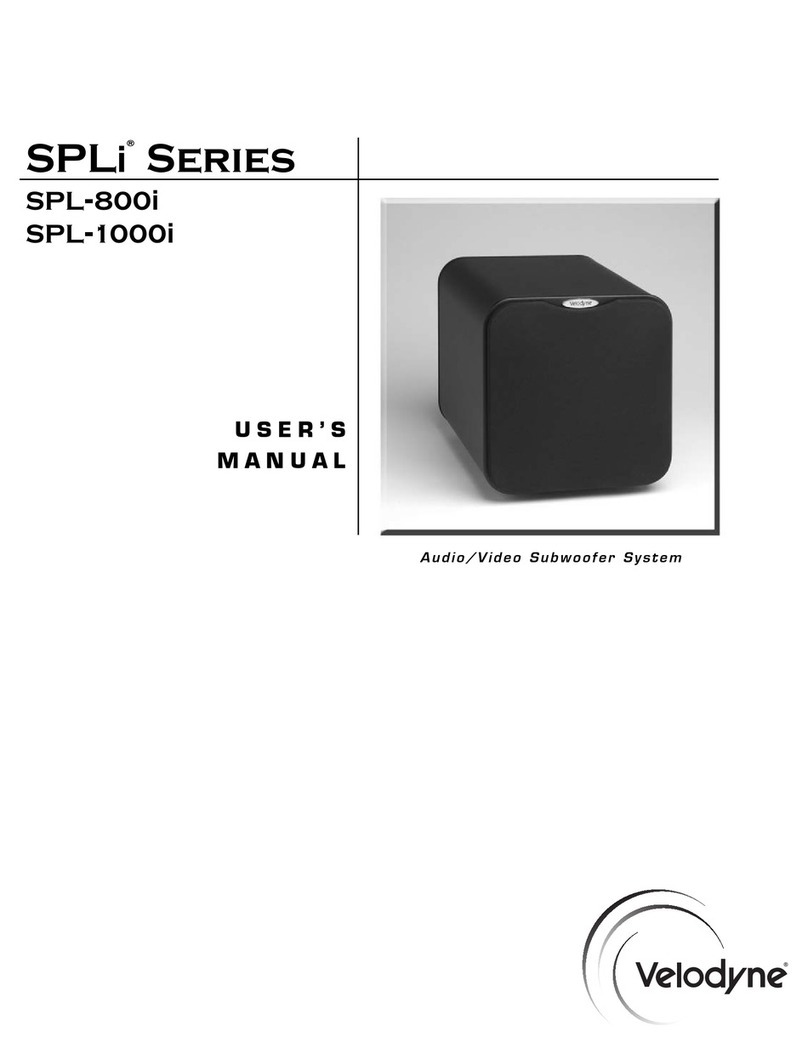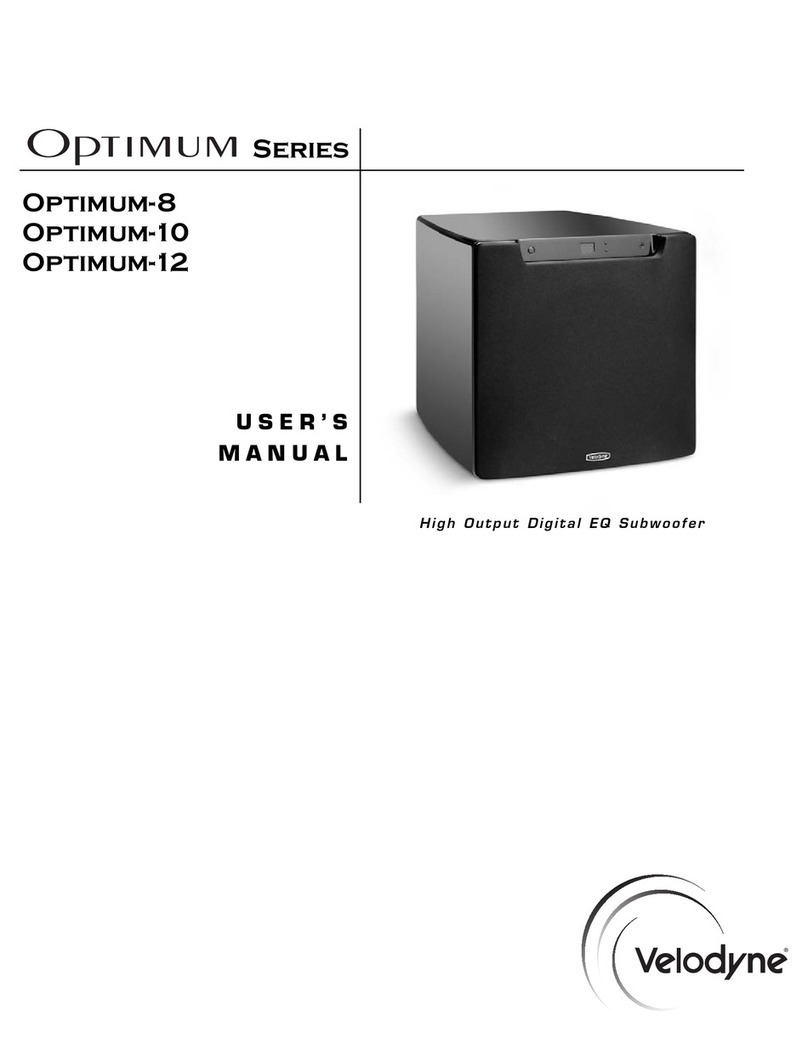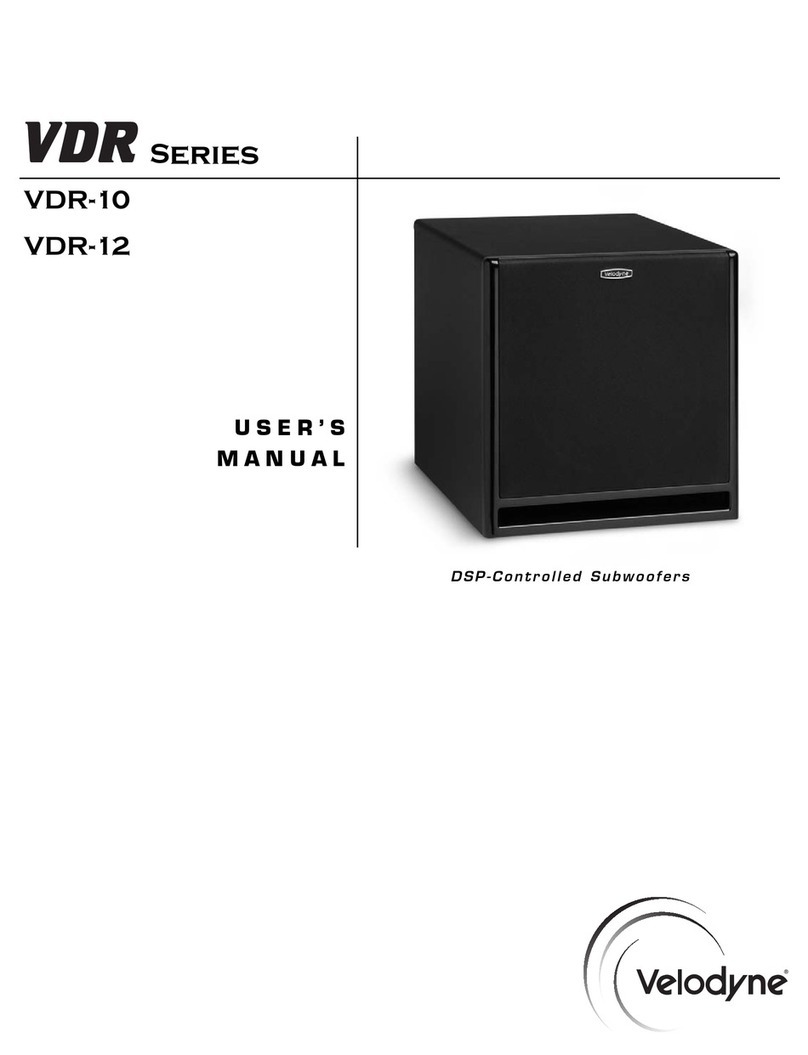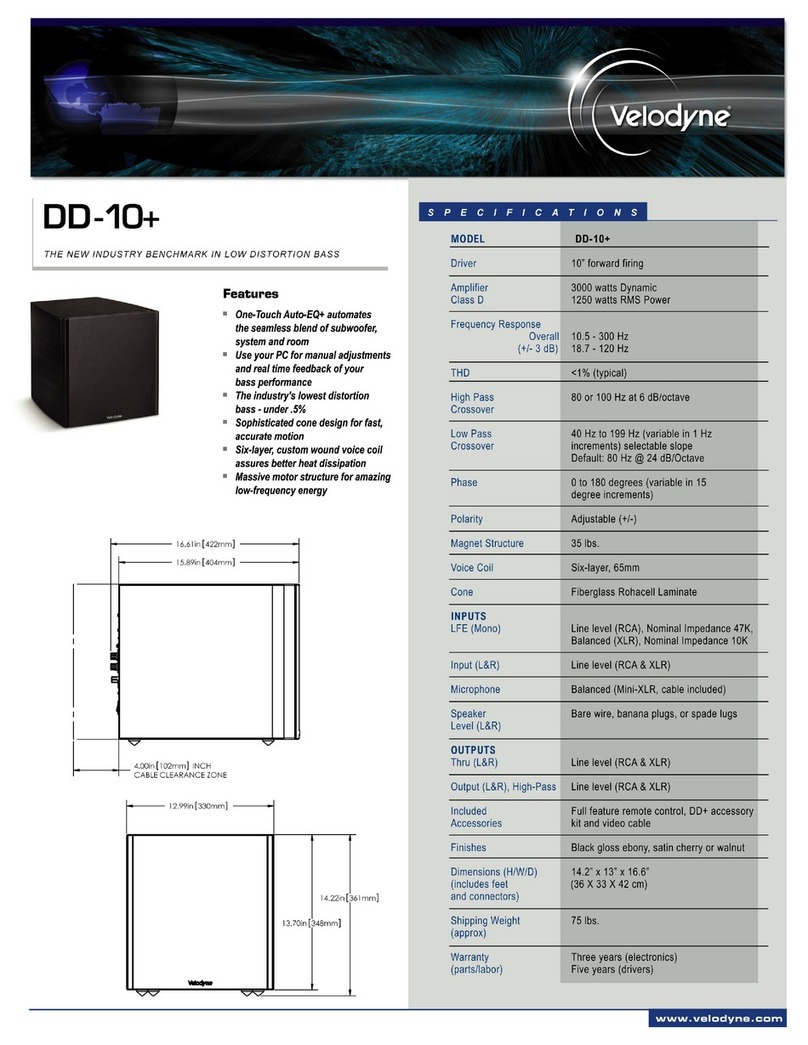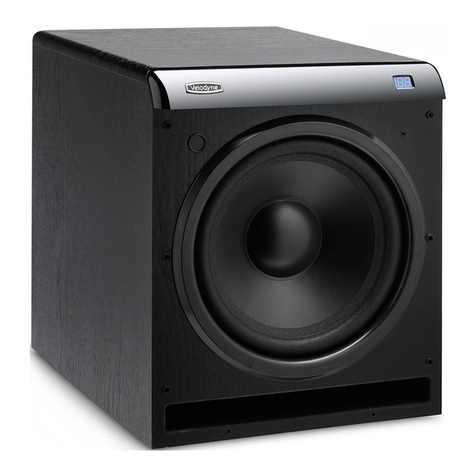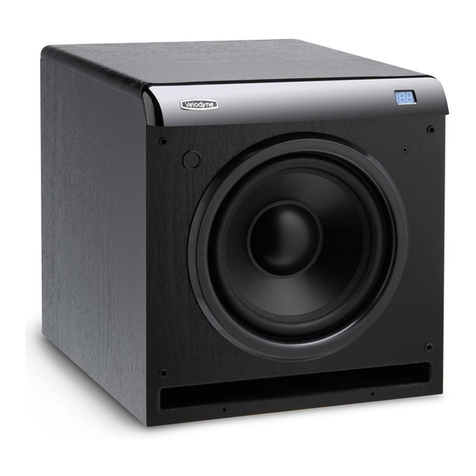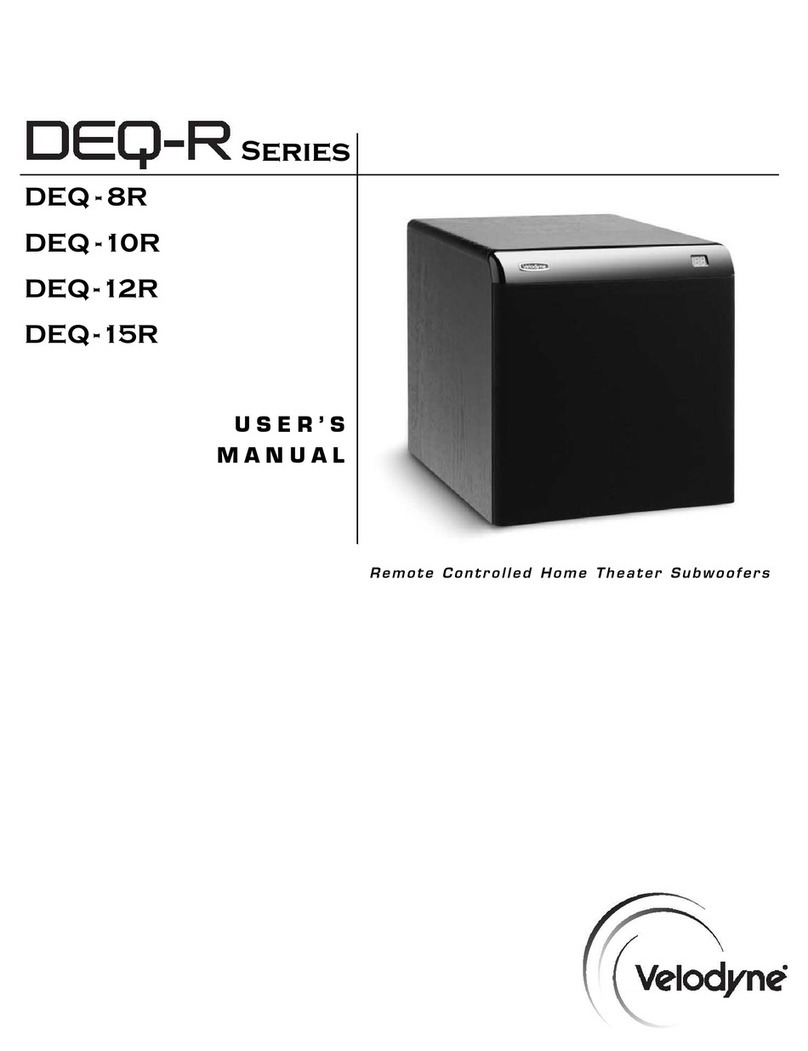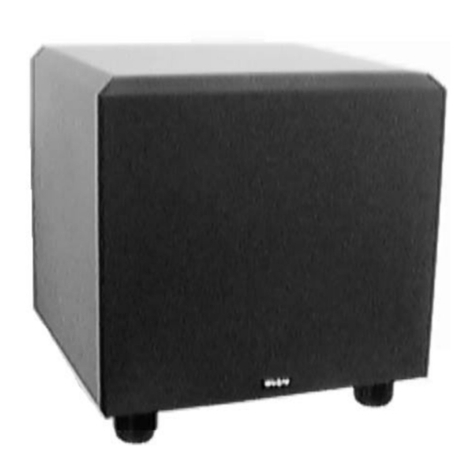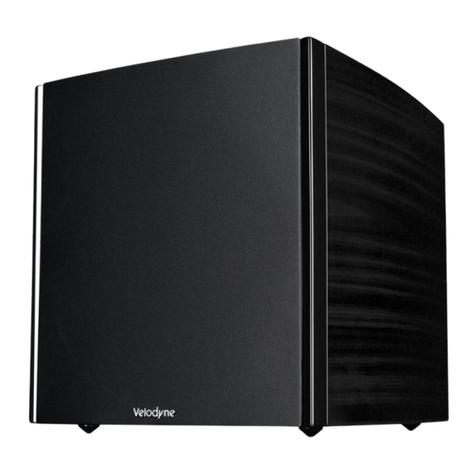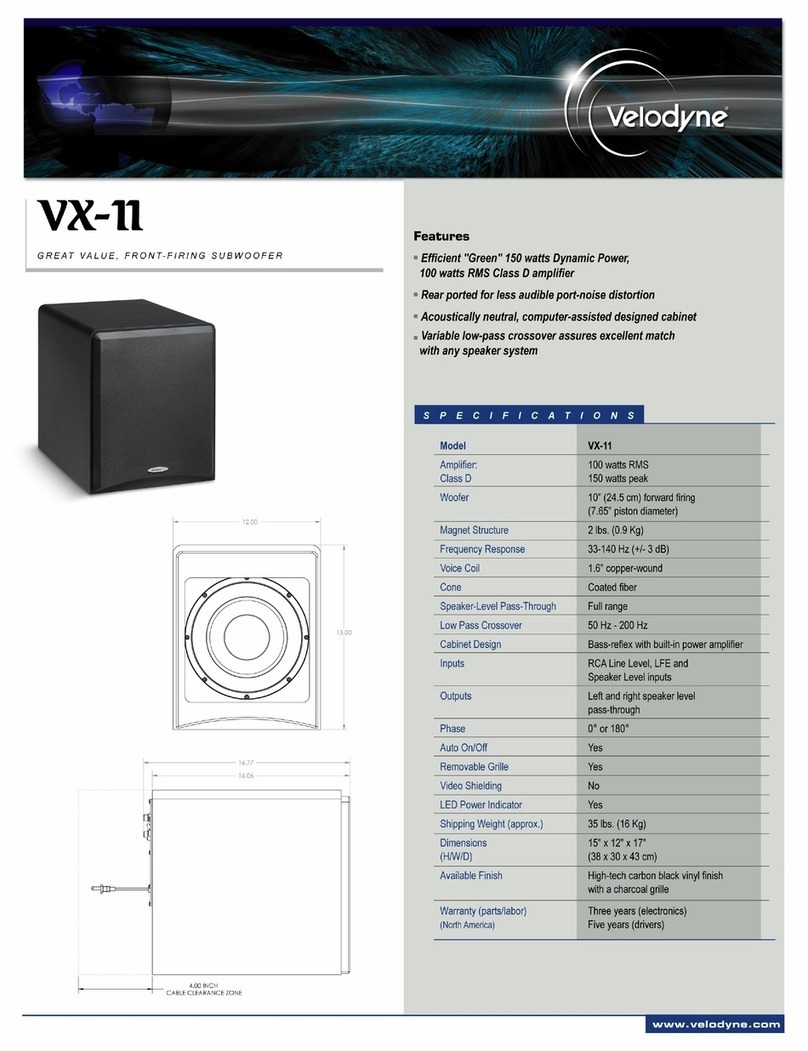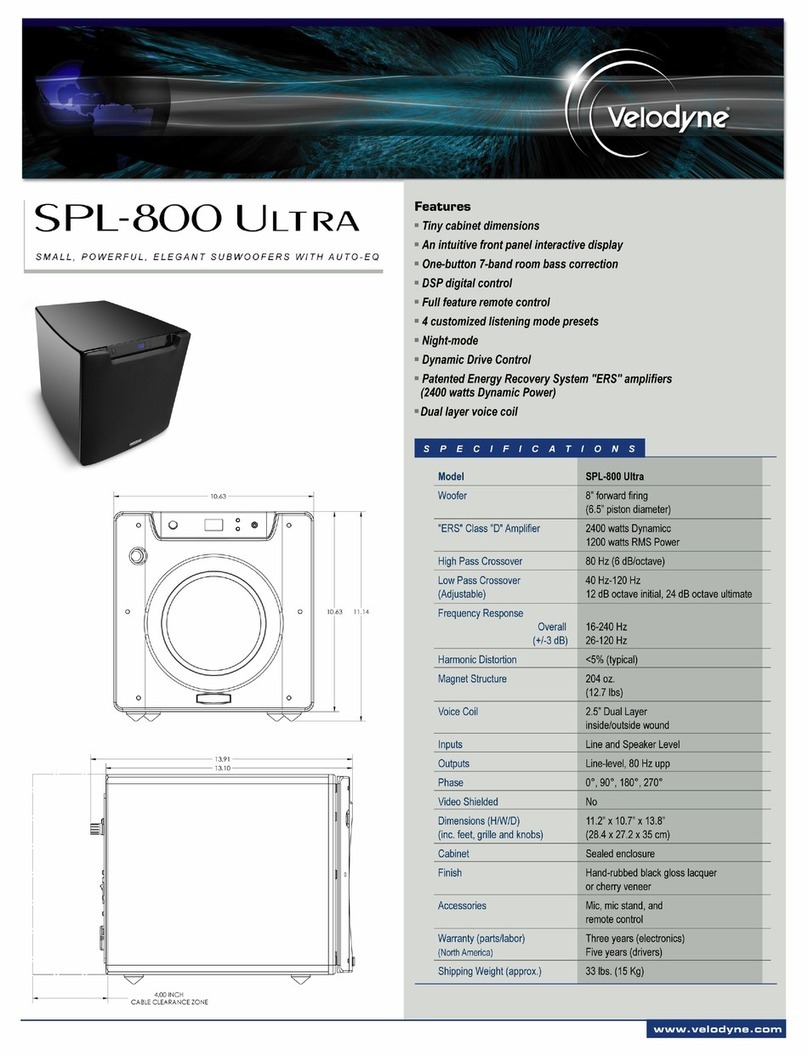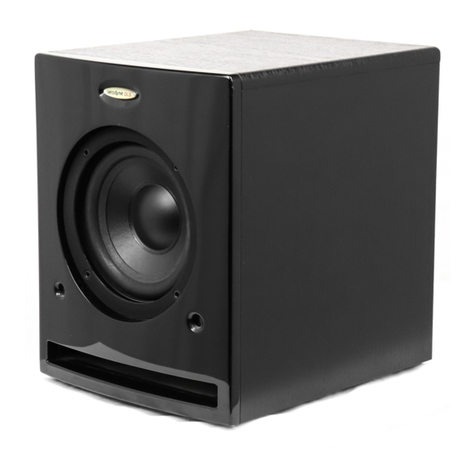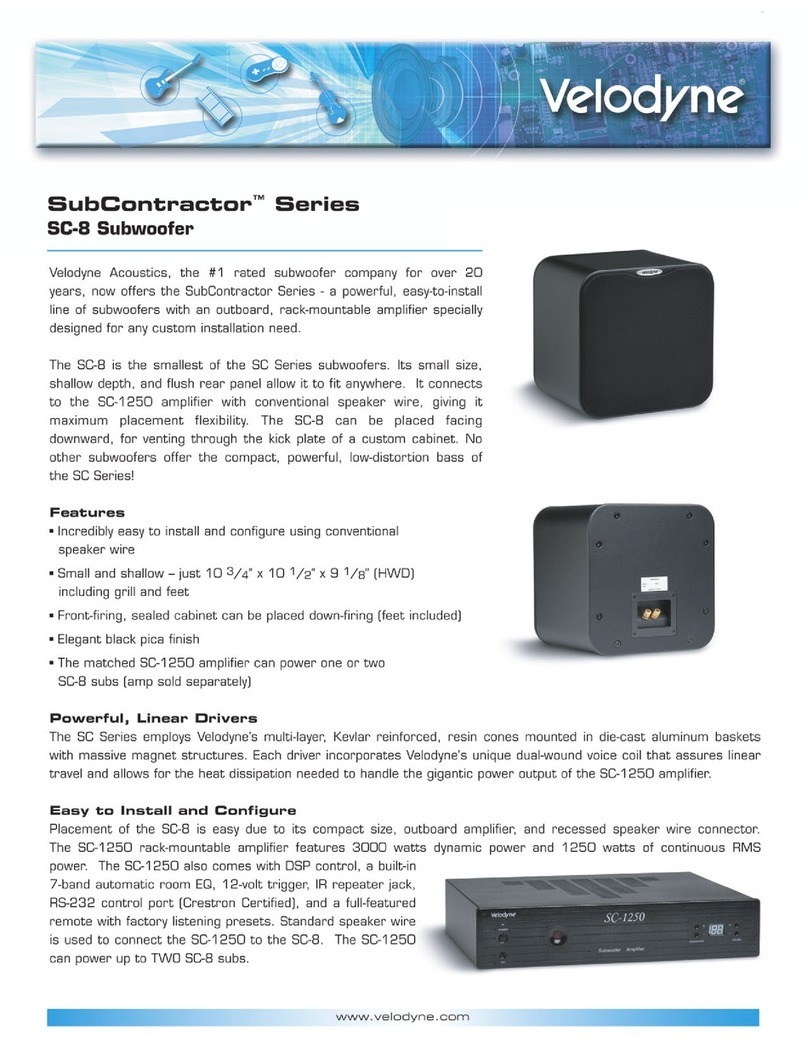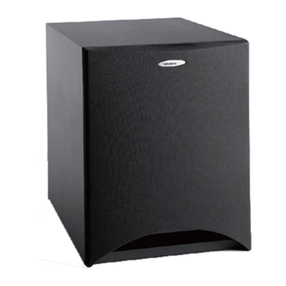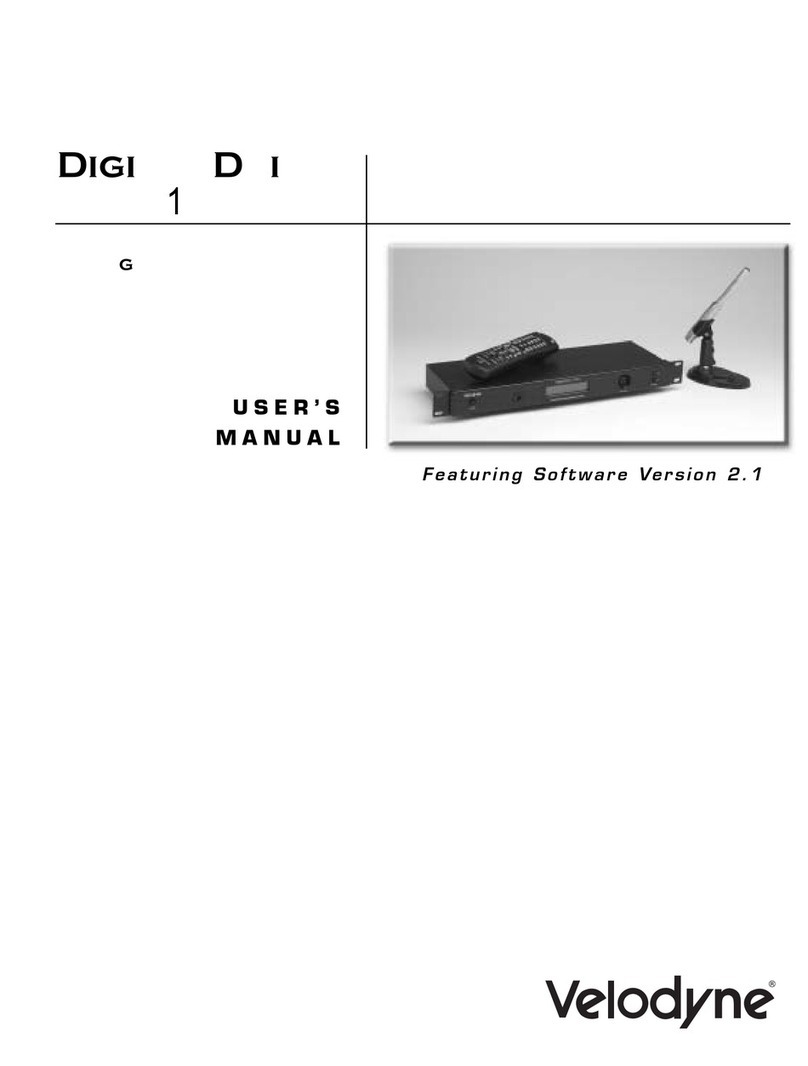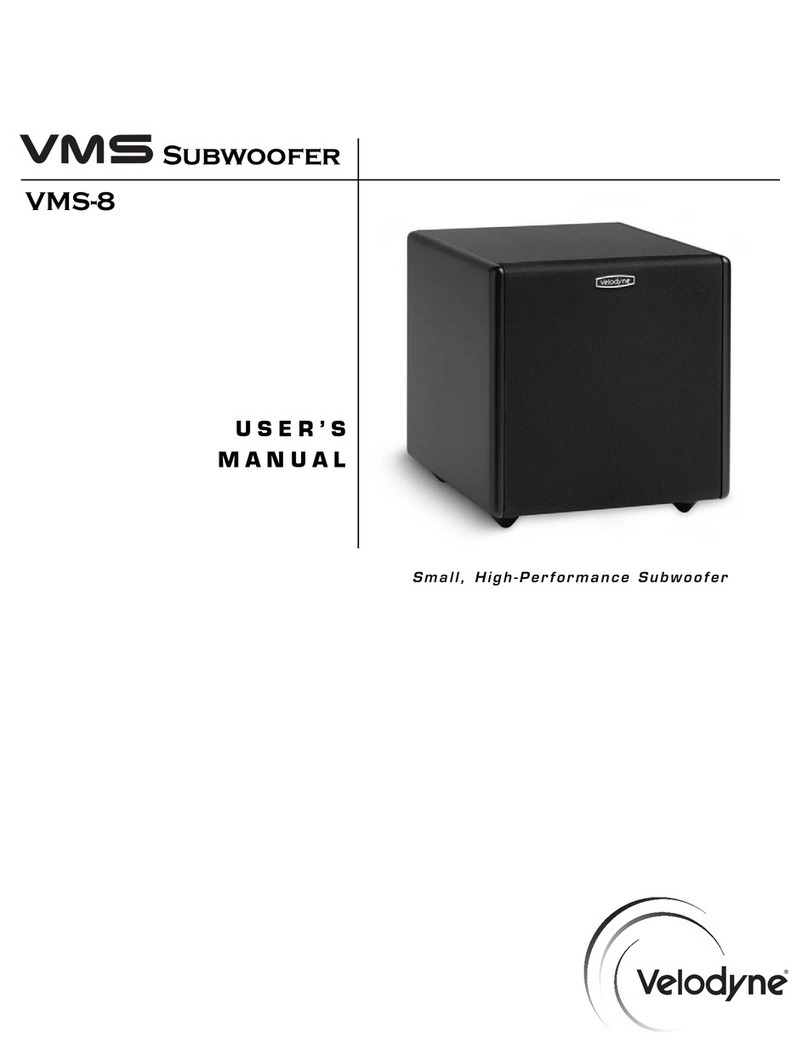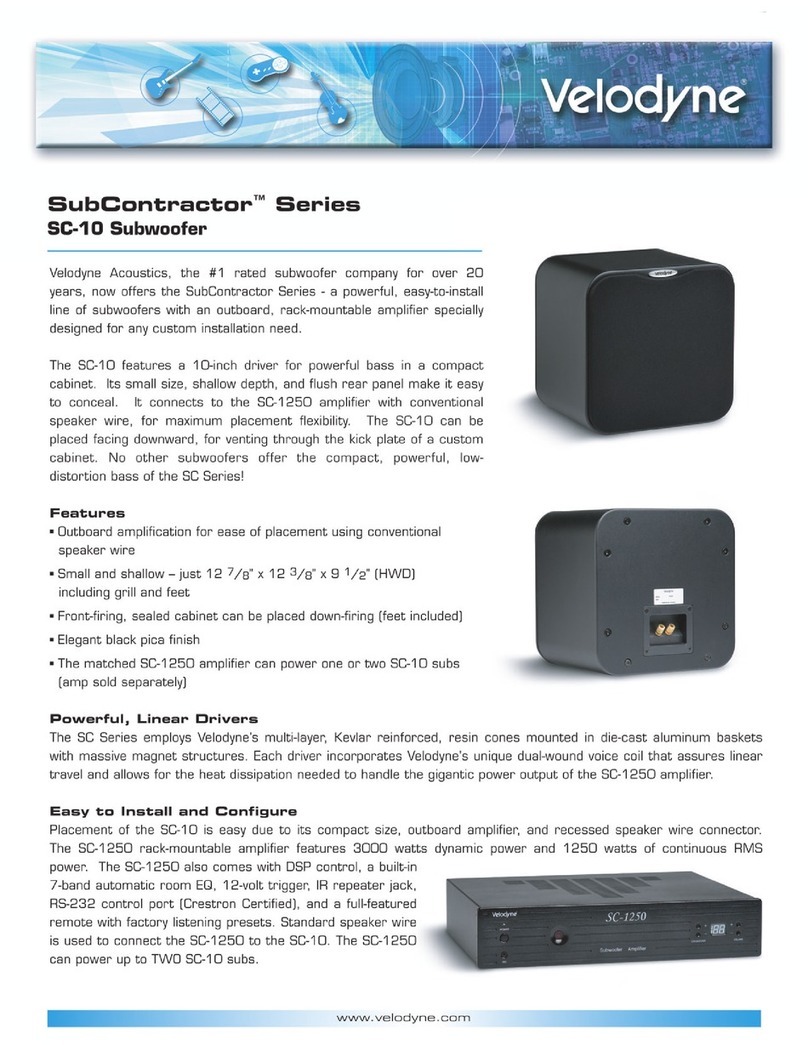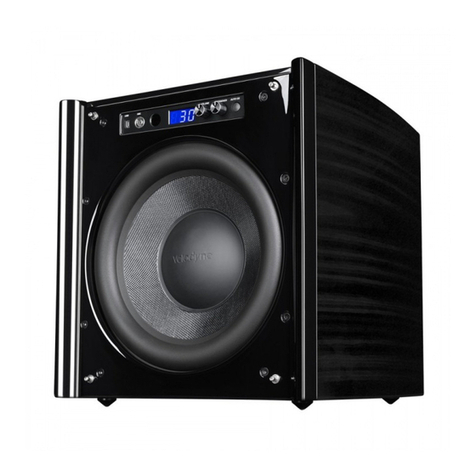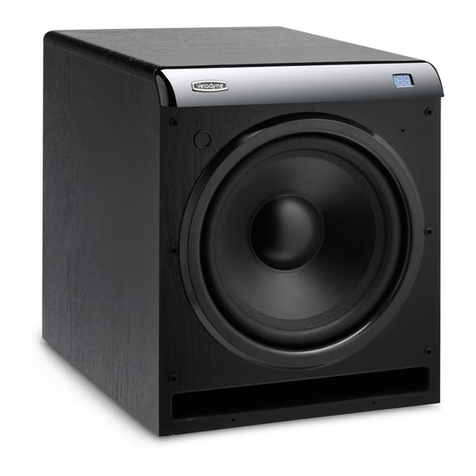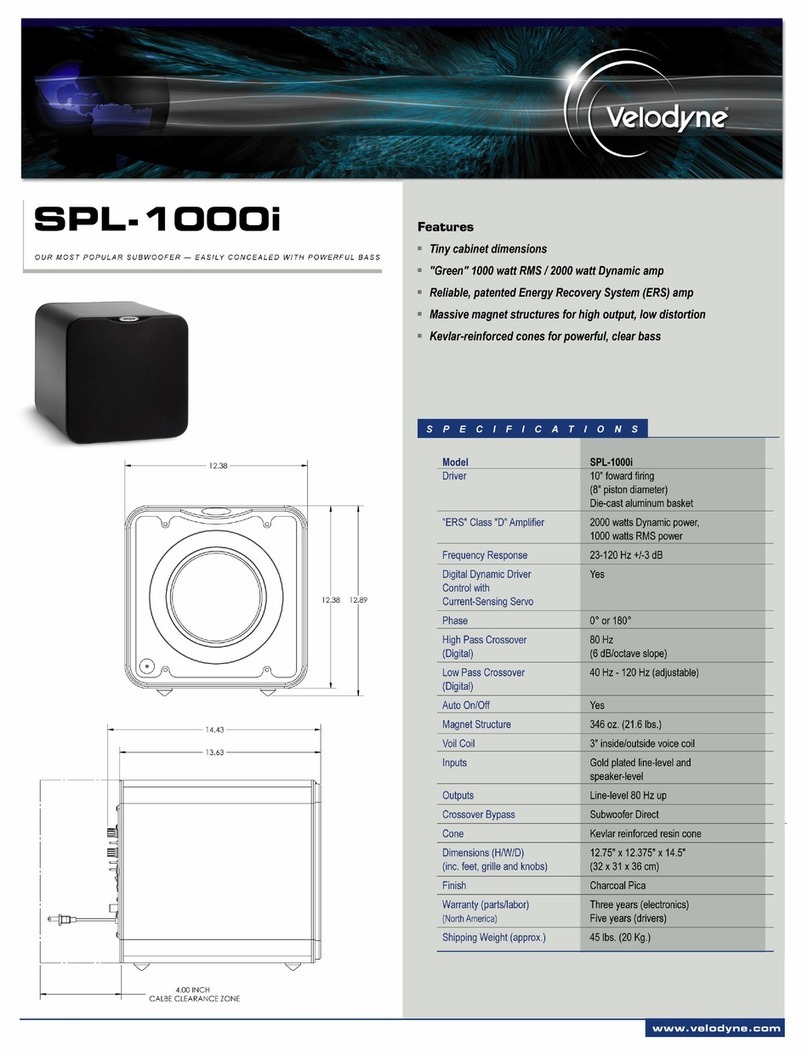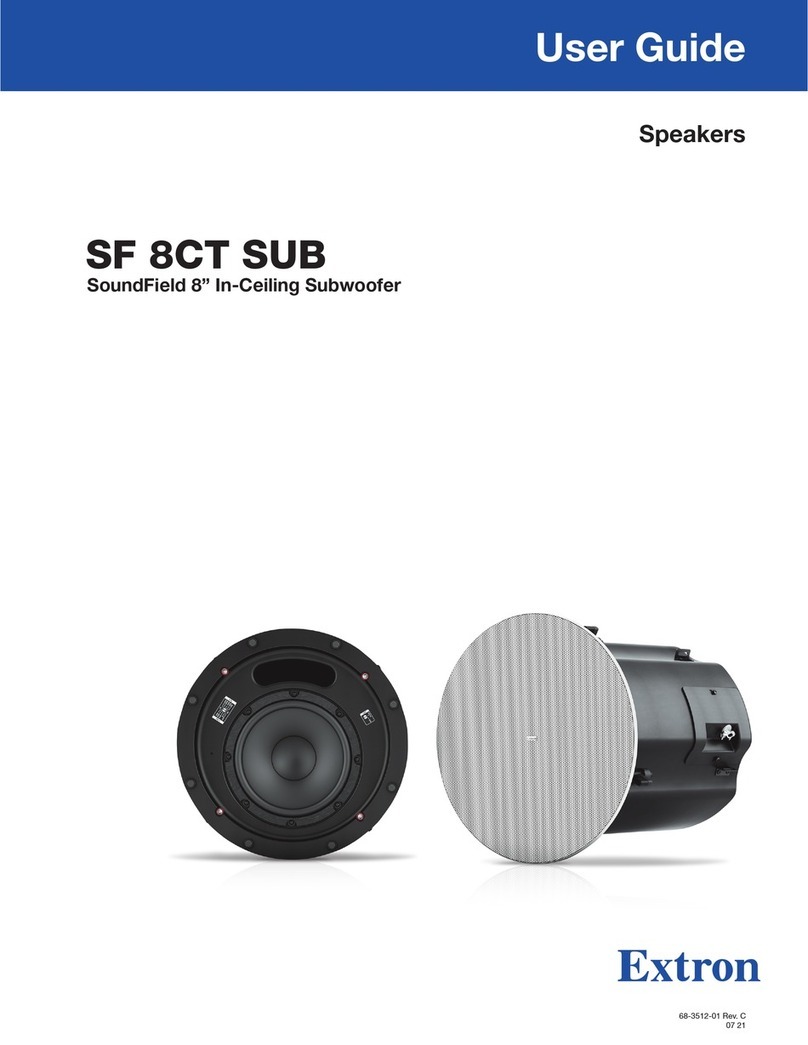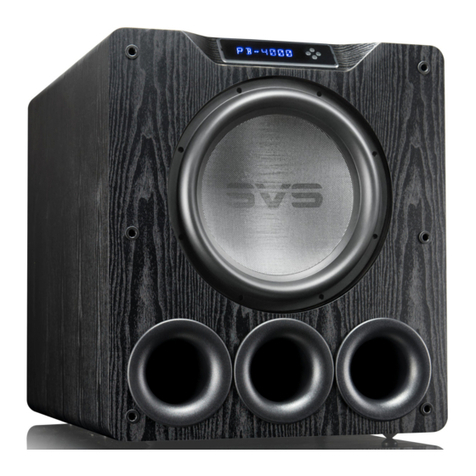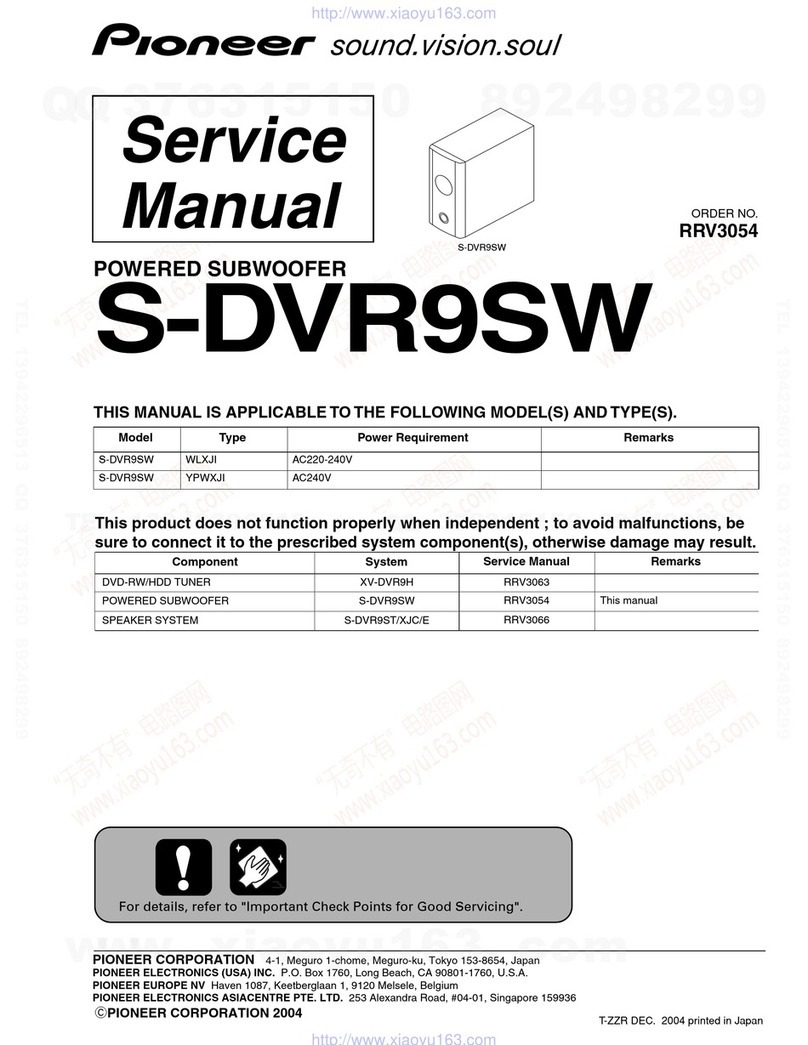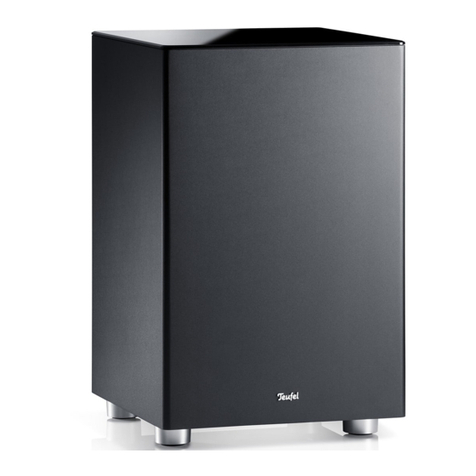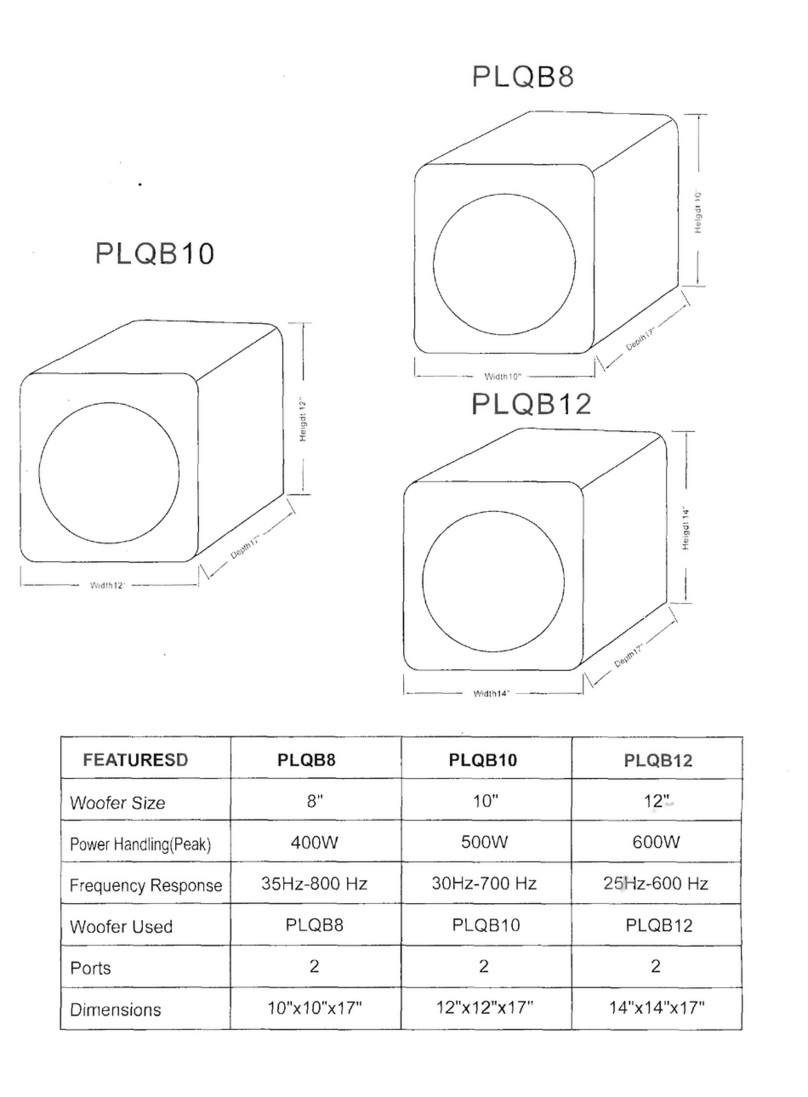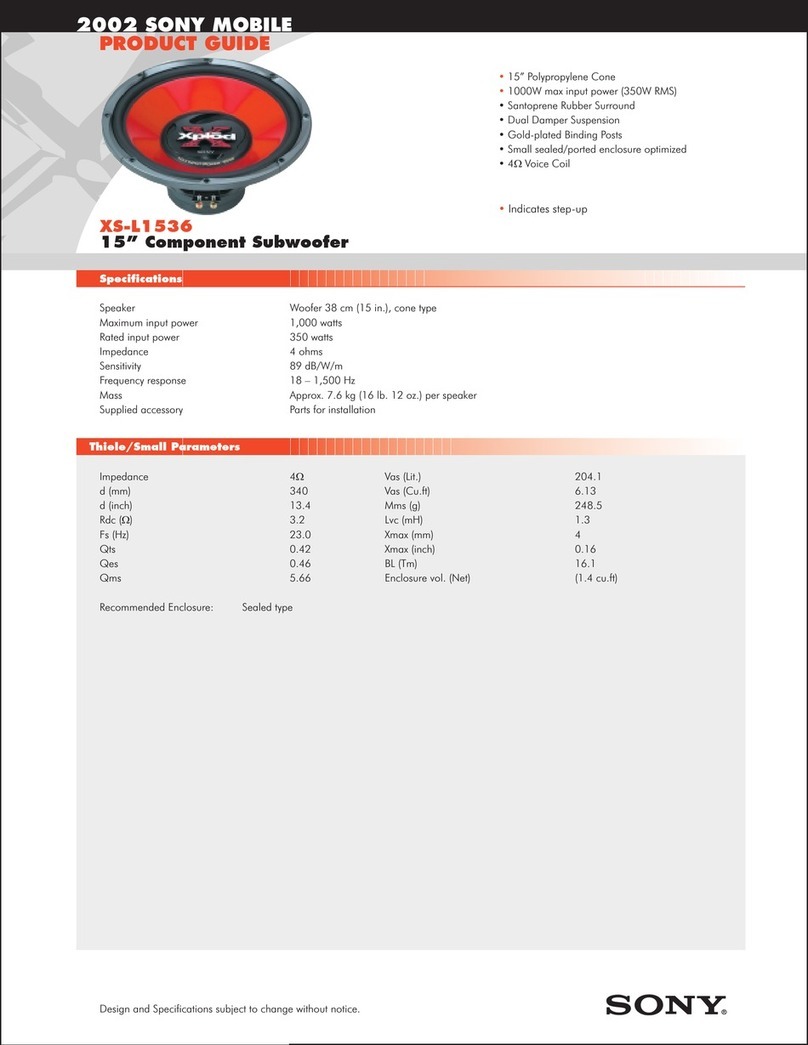r
s-
I
;,
low frequencies. Even at 1 watt drive levels, many loudspeakers have 8 to 10% THD at 40
Hz.
With the
50
watt
drive levels needed to produce realistic bass intensity, these distortion figures rise to astonishing levels. Second,
the distortion products produced by a nonlinear woofer are much easier to hear than is the fundamental fre-
quency. Consider a speaker driven at 30 Hz with 5% 3rd harmonic distortion If the
30
Hz tone
is
90 dB SPL
(Sound Pressure Level), equating to about 5 watts into a typical woofer, the 3rd harmonic, at
90
Hz,
would
be
down
26
dB, or at 64 dB SPL. However, humans are more than 10 times as sensitive to sound at 90 Hz than at
30 Hz The nonlinear distortion produced by a woofer must
be
weighted by the sensitivity function of the human
ear. When this
is
done, it becomes clear that even a small percentage of harmonic distortion is unacceptable in a
bass driver. It
is
also clear that high-order (3rd, 4th, 5th, etc.) harmonic distortion products are more serious than
are 2nd harmonic distortion products. These studies have led to the conclusion that 0.5% is the maximum toler-
able amount of nonlinear distortion for a bass driver, and the less distortion the driver produces, the more capable
it
is of accurately reproducing live sounds
Since most woofers today have at least 10% THD when 0 5% is the maximum tolerated, minor improvements
in
woofer technology are essentially ineffective Servo F-Series Subwoofers have about 90 times less nonlinearity
than a typical 10 inch bookshelf speaker. They have about 3 times less distortion due to their greater size
and
power handling capability, and about 30 times less distortion due to the Servo feedback loop The improvement is
even greater if one considers exceptionally loud and deep tones such as organ pedal notes.
An
interesting result of this reduced distortion is that much of the bass, when played over a Servo F-Series
Subwoofer, seems to actually
be
reduced. The truth, of course, is that the "missing" bass was never really there
on
the source material, and was never intended to
be
played by the artist Distortion products introduced
by
conventional woofers actually make the entire bass spectrum sound louder.
Our Solution
The Velodyne Servo F-series Subwoofer System produces sound in the same manner as any conventional
loudspeaker: a cone-shaped piston
is
forced to move by means of a linear motor composed of a coil situated
between the poles of a very strong permanent magnet.
In
the Servo F-Series, however, this linear motor
is
a
servo-motor, meaning that the motor
is
linked to the power amplifier as part of a control system The basis for the
control action
is
the signal obtained from an accelerometer which is rigidly fastened to the voice
coil.
The strategy
of continuously monitoring the cone motion, and using this information as the basis for the corrective action,
is
called motional feedback. This feedback technique is illustrated in the system block diagram, Figure
4,
The signal into the system is a time varying voltage which is
an
exact analog of the desired acoustic output
from the loudspeaker, The accelerometer output contains sufficient information to deduce the actual acoustical
output of the woofer The servo circuitry compares almost instantaneously how well the acoustic output matches
the command signal coming
in,
If and when there is a deviation, the servo circuitry modifies the drive signal to
the
amplifier so that the acoustic output from the speaker is a true representation of the
input
In
conventional loudspeakers, the drive signal into the speaker is virtually free from distortion but the
speaker's acoustical output may be highly distorted,
In
Servo F-Series Subwoofers, the speaker coil drive signal is
often highly distorted, or actually pre-distorted,
in
exactly such a way that the acoustical output from the speaker is
free from distortion, Motional feedback has been used previously
in
an
attempt to make small woofers sound like
larger, more powerful ones At Velodyne, the use of motional feedback is applied to make what is already a large
and powerful woofer achieve a level of performance that has never before been reached in a home entertainment
product
HGS System Components
(Refer to Figure 4)
High and
Low
Pass
Crossovers
receive the incoming audio signals from your system pre-amp or power
amp,
Frequencies above 85 Hz are diverted to your power amplifier while frequencies from the right and left channels
below 40 to 100 Hz (depending on low pass crossover setting) are summed to monaural and passed on to
subsequent stages
in
the subwoofer,
Loop/Control
Stage Incoming bass signals pass through a variable gain amplification stage designed to protect
the subwoofer from being overdriven (see Supporting Circuits on next page) With a bit of added filtering, the bass
signal
is
now ready to be compared with the feedback signal of the accelerometer, A composite signal is created
which compensates for erroneous movement of the cone,
-7-
